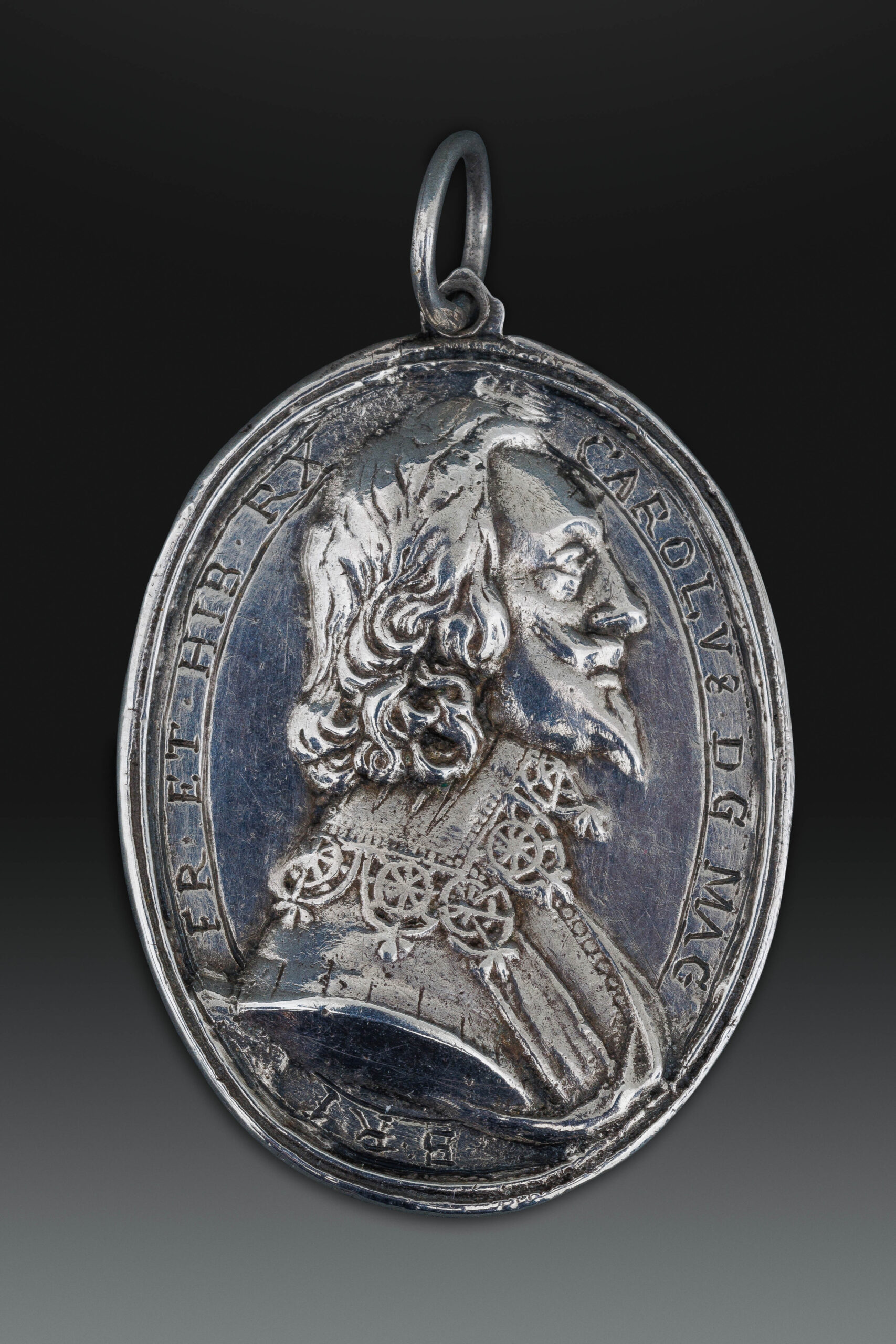



$15,000.00
1 1/4 ins wide and 1 1/2 ins high
For questions regarding viewing, shipping, and anything else,
contact us at: [email protected]
Provenance
Almost certainly sold at Christie’s on the 1st of January 1970 lot 516
Literature
Helen Farquhar, ‘Portraiture of the Stuarts on the Royalist Badges’, in The British Numismatic Journal, vol.II, 1906
British Museum Medallic illustrations of the history of Great Britain and Ireland to the death of George II (Vol I) 1885
John Pinkerton The Medallic History of England to the Revolution (1790)
This badge is a very rare survivor from a period of political turmoil in England. Owning a piece like this would have indicated Royalist sympathies and discovery would have led to imprisonment or death. The suspension ring incorporated in to the body of the badge would have allowed the piece to be worn as a pendant or displayed in other ways about the body but it would have taken a very brave man or woman to have worn one until the restoration of the monarchy in 1660. As such it seems that most of the surviving pieces were probably kept in shrines in the homes of royalist sympathisers and handled regularly-hence the relatively poor condition of these pieces.
An example presented to the Royal family in 1951 (RCIN 443104) demonstrates this perfectly-the reverse, the profile of Queen Henrietta Maria, having lost most of its definition.
 the example in the Royal Collection
the example in the Royal Collection
The example in the British Museum, registration number M.7254, is in similarly poor condition-in this case it is the lettering on the obverse which has been partially obliterated due to handling and tarnish.

Clearly these items would have been treasured possessions for their 17th century owners and treated as near-devotional objects. The fact that most of them, like ours, were made in silver, a relatively soft metal, has also contributed to the condition issues mentioned above.
Our example, seemingly having been kept in its beautiful fitted case (likely made in the late 18th or early 19th century) has survived in quite remarkable condition with very sharp detail to both obverse and reverse.
It is likely that our piece sold at Christie’s in January of 1970. The image below taken from the relevant catalogue shows a piece with the same tell-tale marks. See in particular the mark on the reverse to the right hand side of the Queen’s head almost level with the M in her name at 3:00

The piece when sold at Christie’s in 1970
The British Museum’s cataloguing of their piece raises some interesting points. It states that ‘This medal was a badge evidently intended to be worn about the person of friends or partisans of the monarch. They are of various sizes and workmanship, and were executed at various times; some evidently worn as ornamental or honourable decorations conferred for services performed, others to be concealed as tacit memorials of the royal person or cause, where an open avowal of such attachment would have been troublesome or dangerous to the wearer’. Our piece is of exactly the same dimensions as the one in the BM but slightly smaller than that in the Royal Collection. Again, the BM curatorial comment suggests that their piece is ‘cast and chased, but only so far as is necessary to remove the roughness of the cast surface’. This could well indicate that our piece was made in a different workshop that had a greater dedication to finishing. When included in the British Museum catalogue Medallic illustrations of the history of Great Britain and Ireland to the death of George II (Vol I) published in 1885 the design was already described as “somewhat rare”. It is fair to say that this rarity has only been exacerbated by the time that has passed since the publication of the catalogue.
The badge, and the other known variants of this sort, was discussed in John Pinkerton’s The Medallic History of England to the Revolution (1790) where an example of this design is shown in plate XIV.
Pinkerton’s description, pasted below, again illustrates that various workshops were involved in the production of these pieces.
 the two illustrations above are from Pinkerton’s work of 1790
the two illustrations above are from Pinkerton’s work of 1790
The designer of the badge was Thomas Rawlins, widely regarded as the best medalist working in England in this period but also a true renaissance man with a gift for poetry and writing plays. It is believed that Rawlins was trained by the Frenchman Nicholas Briot at the Royal Mint. His first signed medal dates from 1641 and he became the King’s official engraver of coins and medals at his mint in Oxford from 1644-1646 as well as producing medals such as one given to Sir Robert Welch in 1643. He continued to produce medals for the Royal family and their supporters until 1648, at which stage he was forced to flee to France. After enduring 12 financially precarious years there, he returned to England in triumph in 1660 when he was reappointed as chief engraver at the Royal Mint. He continued in this role until his death in 1670. In this late period he created a privy seal for Ireland and a series of judicial seals for the Welsh counties.
It is hard to think of an object the embodies history in quite the same way as this badge. It is a tiny and remarkable survivor-a relic of times past that is both aesthetically stimulating and of real historic significance. This piece deserves to become a treasured heirloom in another family-thankfully now without the threat of persecution accompanying ownership.



